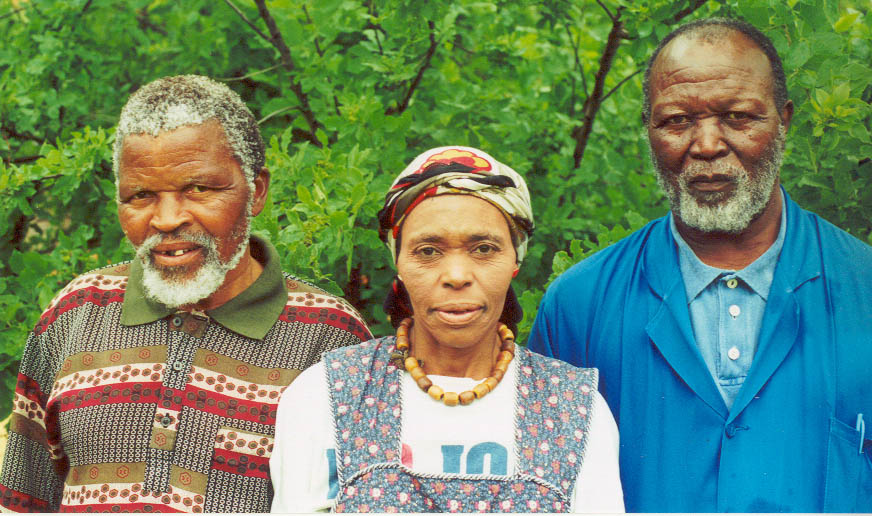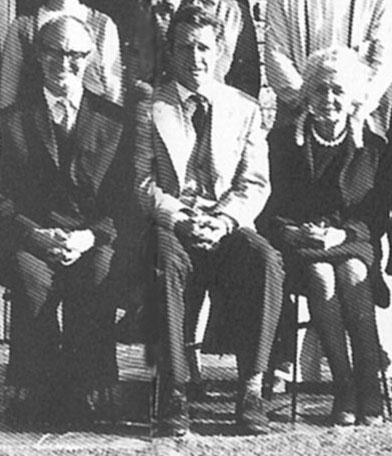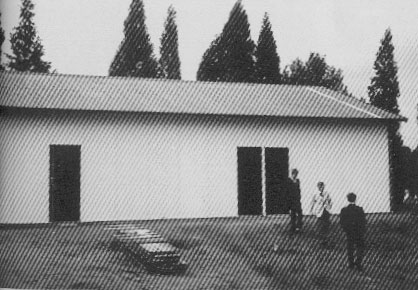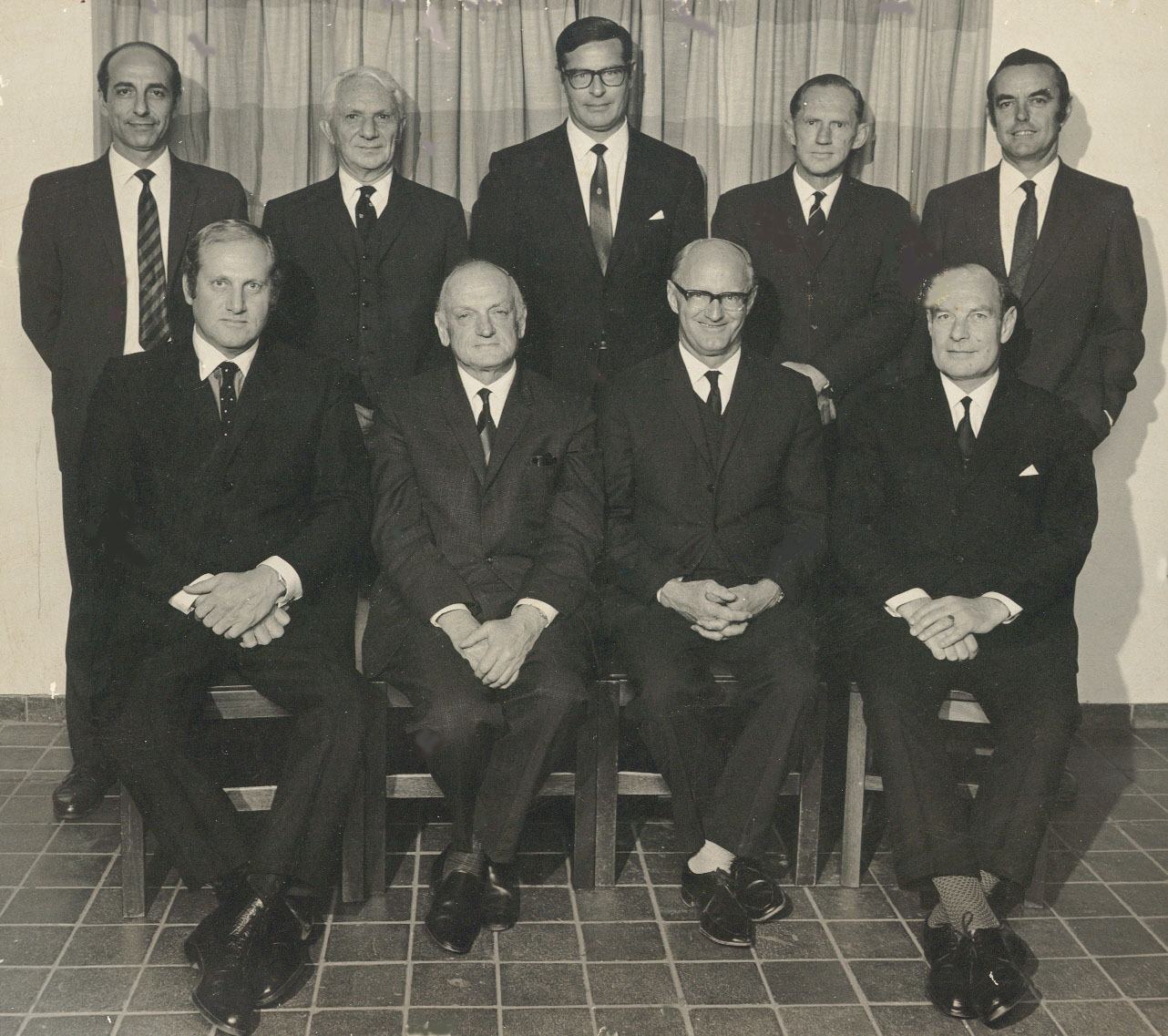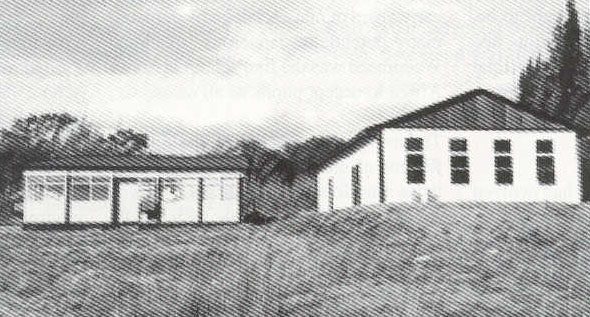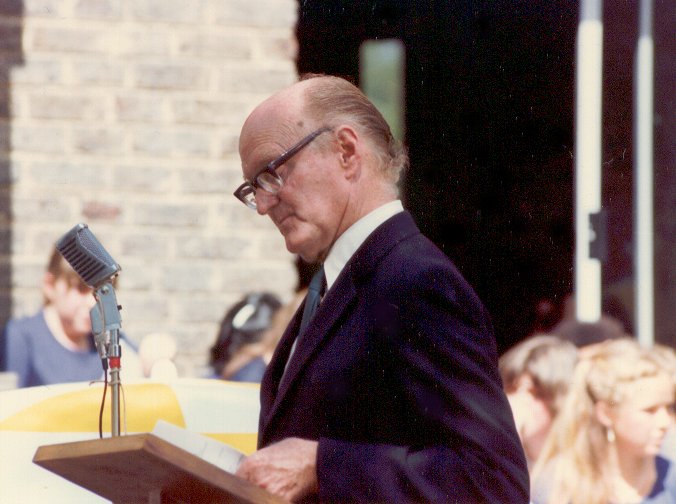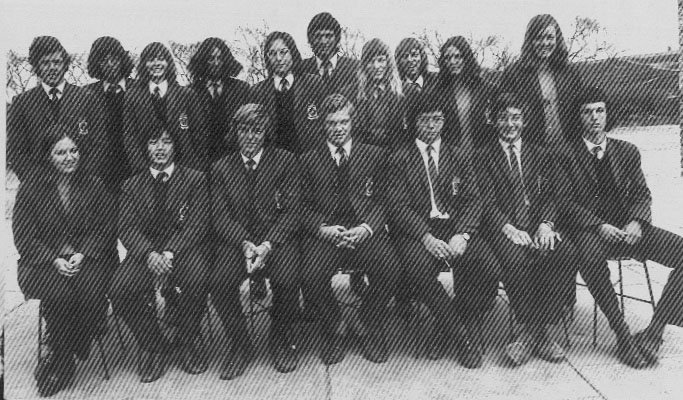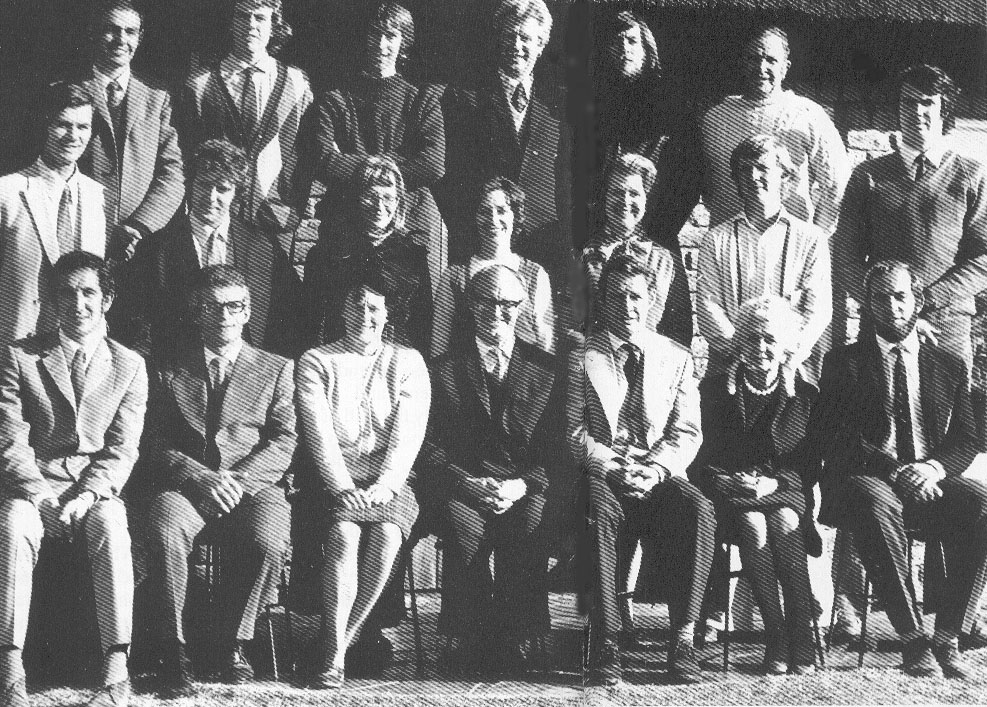The Early Years at Woodmead by Steyn Krige
Long standing staff members from
left Aaron Mdlalose (Chef 1970-1998)
Lizzy Bosholo (Library Assistant
1971-1998) Johnson Ntshuntsha (Driver 1980-1998)
Steyn Krige opening the Woodmead Library
July 1982 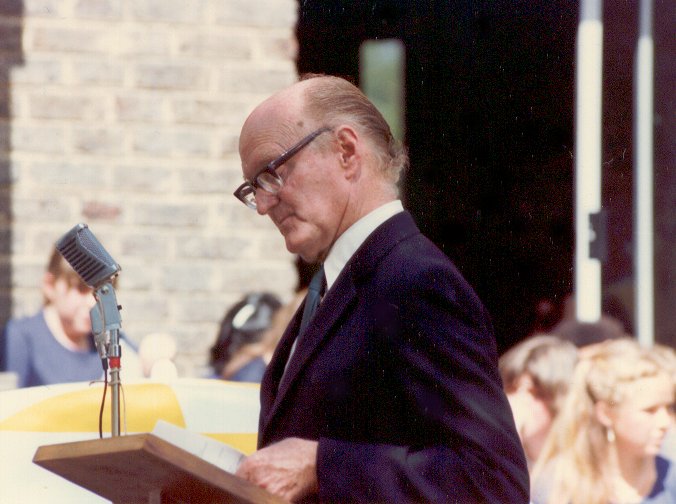
Steyn Krige, Roger Petty
& Erna Tietz
Woodmead School started its journey into the educational history of South Africa in January 1970, on 41 acres donated by Eric Lysis in Woodmead suburb.
There were 54 pupils and twelve members of staff, including Aaron and Elias, who are still at Woodmead. There were 49 day pupils and five boarders under the supervision of Roger and Del Petty.
The opening of the school brought to fruition the dreams of a group of dedicated people who had been inspired by a vision of what education ought to be.
1969 had been a year of frustration, disappointments and setbacks, but a total belief in the vision and a grim determination conquered the obstacles and Woodmead was born.
The Woodmead philosophy had evolved as a result of disillusionment with Christian National Education and all it stood for and a conviction that all right minded South Africans had to do everything in their power to eradicate the evil of apartheid.
The school opened under the able chairmanship of Harry Brigish. From the outset, Woodmead was far ahead of its times – educationally, politically and philosophically.
South African society had degenerated into a vicious circle, which could only lead to self-destruction, and which had to be broken by an educational system based on a liberal and progressive philosophy, which in time would revolutionize the political system and the nation.
Nevertheless, Woodmead believed that in education it is not the creed, policy or philosophy that matter, but the pupil.
Everything was examined minutely and anything that did not benefit the pupil was discarded, no matter how firmly it was entrenched in tradition. “Education for wonder” became the key phrase. The ideal was for every pupil to see life as an exciting challenge which they do their utmost best to meet by realising their own potential to the full.
Against this background, it is not difficult to understand why so many innovations, which have now become generally accepted in education in South Africa, were first introduced at Woodmead. Nor why so many of Woodmead’s former pupils are playing a vital role in our country today.
Woodmead was the first member of the Independent Schools’ Conference to become coeducational. It was the first school to scrap the prefect system and to replace it with a democratically elected School Council, consisting of pupils and teachers, under the chairmanship of a pupil and with meaningful powers. It was this body which made all school rules, applied discipline, decided to do away with uniforms and which drew up the Woodmead Charter – a code of conduct which played a vital role in the early years of non-racialism by defusing many potentially dangerous situation.
Woodmead was the first school in South Africa to accept pupils of all races.
The move to non-racialism was the fulfillment of one of the major dreams of those who founded the school. It was exciting, but also traumatic with threats of withdrawal of registration, closure, legal action, withdrawal of permission to write the final exams and gaol sentences.
The policy was to keep the State informed and to tell them when we were going to break the law, strengthened by the certainty that what we were doing was morally right.
It was at Woodmead that Integrated Studies was first taught and became more highly developed than in any other school in the world. The system was highly acclaimed by our universities and teacher training colleges, but only recently followed in part by other schools in South Africa.
It was a method that stressed skills and techniques rather than facts, which encouraged pupils to use their initiative. It taught them how to do research and to think rather than what to think.
Team teaching was the order of the day and much use was made of experts not on the staff. As examinations served little purpose, they were scrapped in standards 6, 7 and 8. It has been tragic that I.S. has not survived as a result of pressure to produce better matric results, whereas the reality is that throughout this period Woodmead was always one of the top schools in the J.M.B. exams! I am happy to hear that I.S. has been resurrected in 1995.
Woodmead was the first school to introduce a tutor system. A system which played an important role in the effective discipline and in the very good relationships between pupils and teachers. Out of this system developed the Tier System which no other school has dared to adopt, but which was extremely successful in motivating pupils, encouraging responsibility and producing self-disciplined pupils who were happy and fulfilled at school.
Woodmead grew rapidly and by 1972 had nearly 300 pupils and a long waiting list. After six months at the original site, circumstances forced a move to the present site. Due to the rapid growth and lack of money, the famous ‘longdavels’ sprang up and served the school faithfully for many years, until additional funds enabled the governors to erect the existing lovely buildings. Here again the emphasis was away from box-like structures towards creating an environment that the pupils could enjoy and be happy in.
All that Woodmead accomplished in those early years was due to the fact that the school was served by a staff who were totally convinced of what they were doing and who were prepared to give and give again of themselves far beyond the call of duty.
While the aim had always been to produce great lives and not a great school, the fact that a great school has evolved was in no small measure due to the dedicated efforts of people like Roger Petty, Ben Laubscher and Erna Tietz. To them Woodmead owes a lasting debt of gratitude.
- Loyal Woodmead staff
Taken from the webpage http://web.archive.org/web/20091022143652/http://geocities.com/woodmeadschool/KrigeEarlyYears.html which I believe was originally published by Dennis Woodward (former Woodmead teacher)

